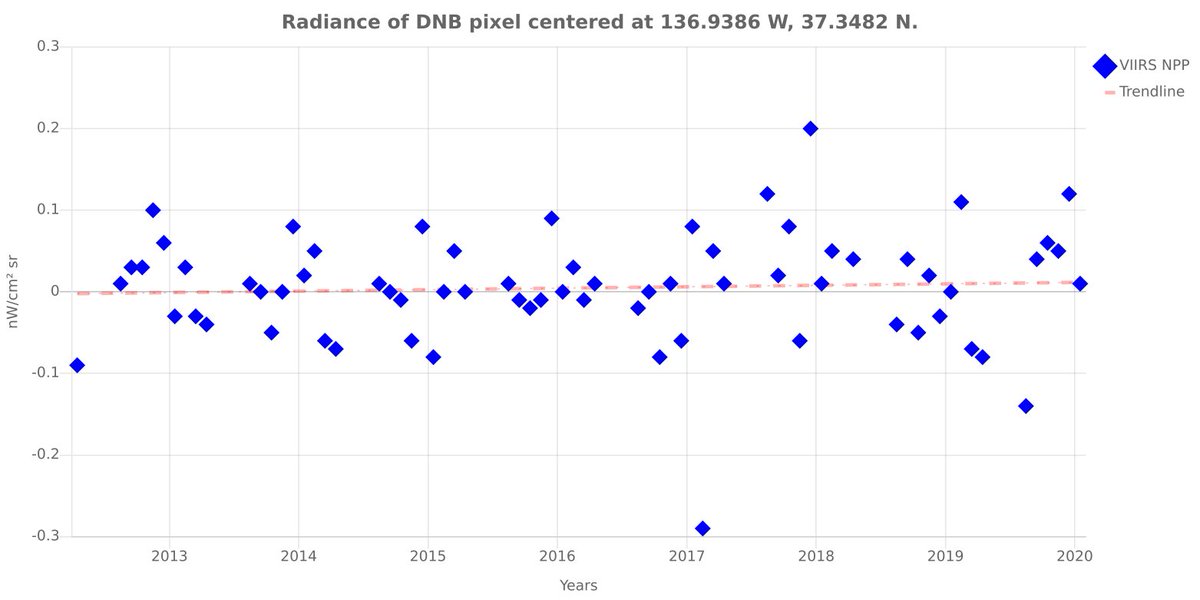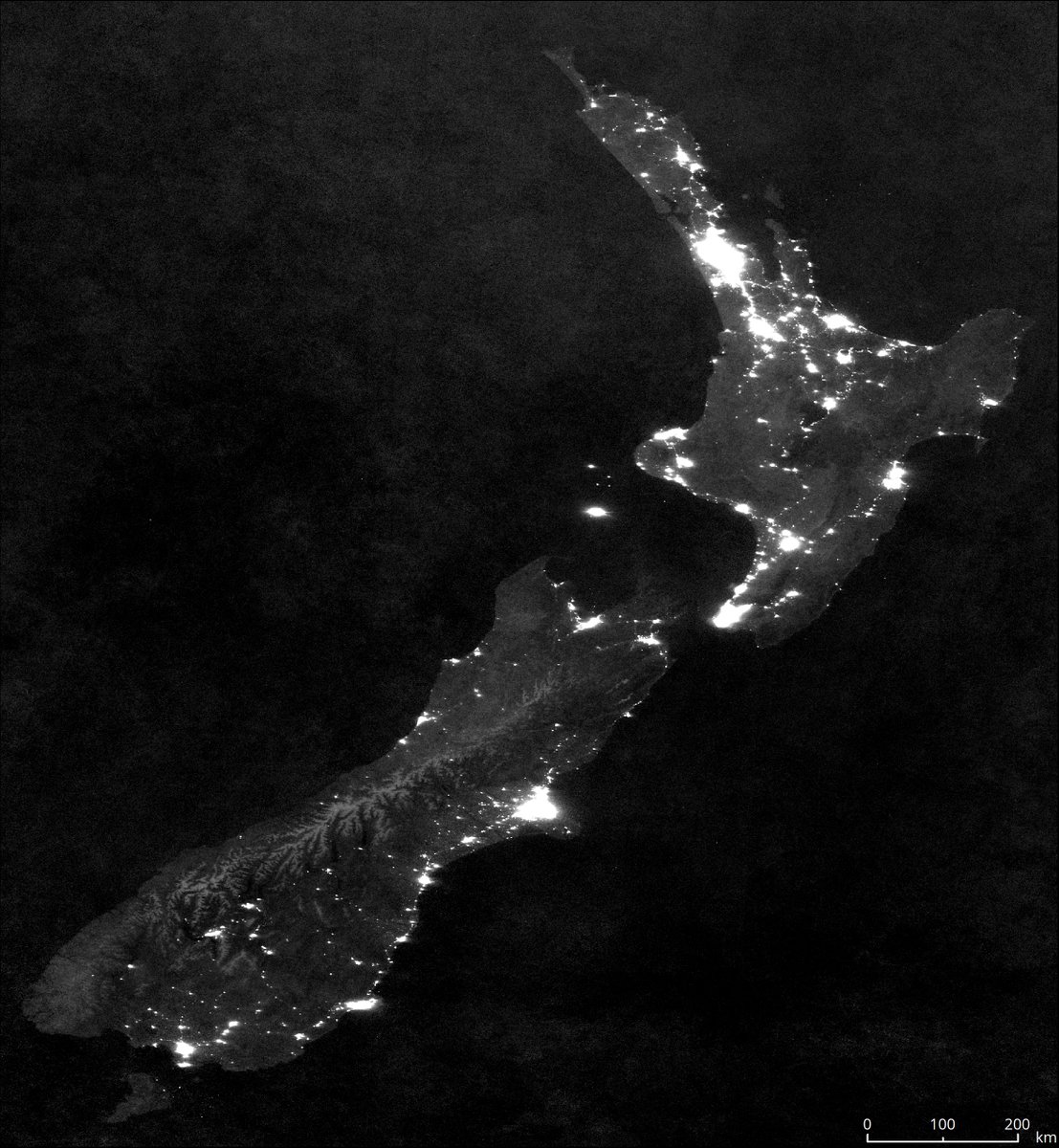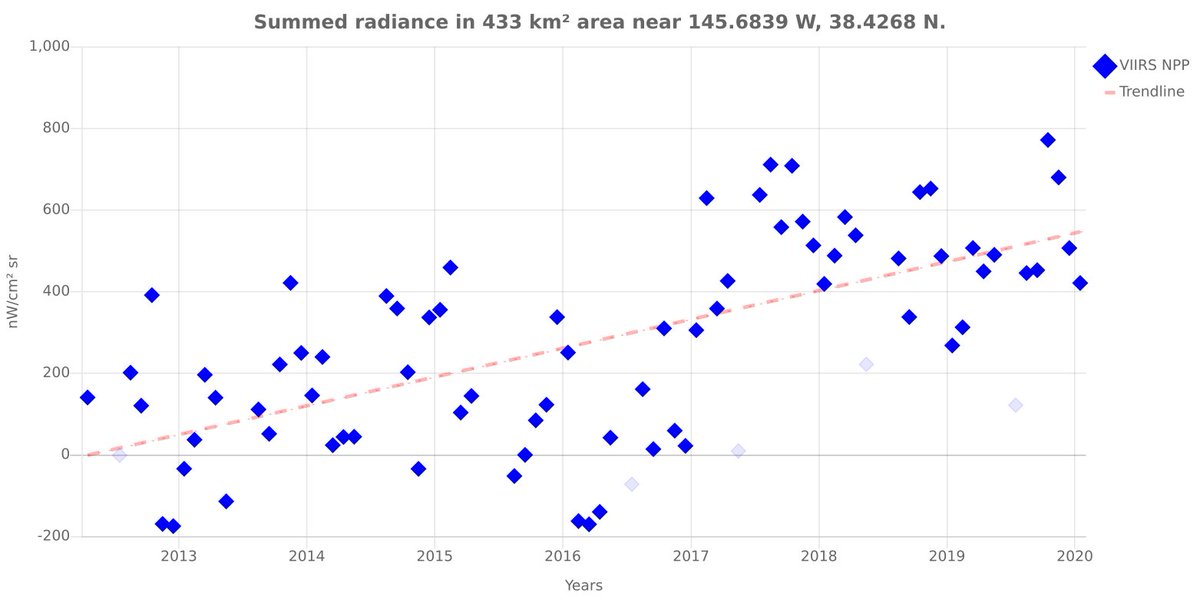Image shows the result for a random location in the Pacific Ocean. Thread 👇🏿


(image by paper co-author @Helsche, more details here: lossofthenight.blogspot.com/2019/09/new-ze…)

But that's not particularly helpful for people studying artificial light, because it means there is a jump in 2017.


(Image from the new paper: mdpi.com/1424-8220/20/1…)


On the "satellite" button at left, choose "VIIRS DNB (zero point correction)"
This includes code to (rapidly) get data for individual points. We are currently working on a revised version of our paper about global change in night lights using this.







